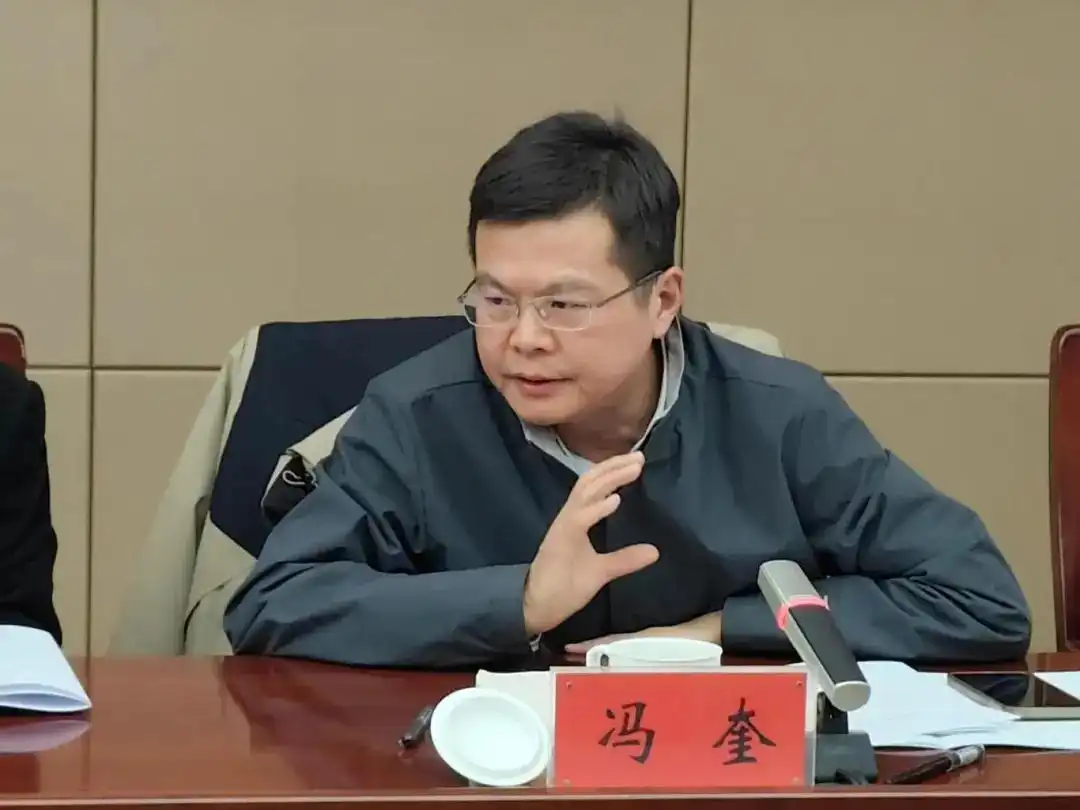Promote the urbanization of agricultural migrant population and contribute new strength to expanding domestic demand
Feng kui

core point of view: 农业转移人口市民化不仅是扩大内需的关键之举,也是供给侧结构性改革的重要内容。通过供给侧结构性改革培育造就新型劳动者,进而加快形成新质生产力,具有重要和深远的意义。
■ Feng Kui
The report of the 20th National Congress of the Communist Party of China pointed out that we should promote new urbanization with people at the core and accelerate the urbanization of agricultural migrant populations. In February this year, the Central Committee of the Communist Party of China and the State Council issued the "Opinions on Learning and Applying the Experience of the" Thousand Villages Demonstration and Ten Thousand Villages Renovation "Project to Effectively and Effectively Promote Comprehensive Rural Revitalization" proposed to promote the integrated development of urban and rural areas in counties and implement a new round of urbanization of agricultural transfer population. action. This year's "Government Work Report" also emphasized that accelerating the urbanization of agricultural migrant populations should be given a prominent position. From this point of view, the urbanization of agricultural migrant populations plays an important role in promoting the quality of urbanization, expanding effective demand, and building a new development pattern.
01 Citizenship of agricultural transfer population is conducive to expanding domestic demand
The purpose of realizing the urbanization of agricultural migrant populations (commonly referred to as "migrant workers") is to allow migrant workers to integrate into their permanent places of employment and better live and work in peace and contentment. This is a need for their own development. Data from the "Seventh Census" shows that China's separated household population is 490 million, of which the total floating population across provinces or provinces is 370 million, accounting for more than 1/4 of the total population. About 1 in 4 people is a floating population. Status, migrant workers account for 60% of these separated households.
From another perspective, in the process of urbanization of agricultural migrant populations, strong domestic demand potential can be released. As of the end of 2023, there are 290 million migrant workers in China, and their family members account for more than half of China's total population. In terms of potential sources, 80% of China's middle-income groups come from two major groups:One is the group with college graduates as the main body, and the other is the group with the new generation of migrant workers as the main body. If the model of "one person entering the city and settling down with his family" is started, that is, one migrant worker brings his spouse and one child to settle down in cities and towns, it will obviously create a huge domestic demand potential of trillions of yuan or even tens of trillions of yuan.
In short, accelerating the urbanization of agricultural migrant populations should become an important policy direction for the government. By implementing this policy, we can further promote migrant workers to become middle-income groups, and in the process, we can receive the policy effect of expanding domestic demand.
In particular, it should be pointed out that during the "15th Five-Year Plan" period, the urbanization of agricultural migrant population was not only a key move to expand domestic demand, but also an important part of supply-side structural reform. It is of important and far-reaching significance to cultivate and create new types of workers through supply-side structural reforms, and then accelerate the formation of new productive forces.
02 The urbanization of agricultural migrant population faces practical difficulties
First, 住房难题影响农民工落户城镇。一是买不起房。在100万人口以上城市,农民工人均居住面积20多平方米,约为全国城镇居民居住面积的一半。如按大城市均价1万元/平方米计算,1个农民工不吃不喝干8年才能买40平方米的房子。从租房来看,进城农民工人均租房面积虽不到城镇居民的一半,但其支出已在总消费中占到40%左右。二是保障性住房覆盖面窄。长期以来,中国城镇住房保障制度都是以户籍人口为基础的。农民工因户籍在外地农村,对就业地城市政府提供的经济适用房、廉租房等,一直没有资格享受。政府投资保障性住房面临较大财政压力,市场化主体的积极性不高,一些省份保障性住房供给呈逐年下降趋势。三是租户的公共服务得不到保证。地方政府开展城中村整治、群居整治等行动后,农民工租房也变得困难。农民工公寓之类的住房多数处于城乡接合部,生活配套设施不健全,影响日常生活;而集中性的农民工公寓,隔断了农民工与当地居民的社会交往,不利于促进社会融合。进城农民工大都租住在城乡接合部的城中村、自建房,不少老旧小区设施设备年久失修。
Second, 农民工在获取稳定收入与就业保障方面有许多困难。一是技能素质的基础较弱。根据近几年农民工监测报告,在全部农民工中,初中及以下学历占七成。他们从事的多是货运司机、骑手、简单流水线操作、工作苦力等工种。二是社保对稳就业稳收入的作用不充分。农民工流动性较大,常以工程项目的周期作为工作转换的周期。中国社保转移程序繁琐,若在一地未缴满固定年数,则只能转走个人账户部分,企业部分留存当地,因此,农民工社保转移成本较高。由于流动性大、季节性强、工作“断点”多等原因,多数地方只统筹本地户籍的灵活就业人员。农业转移人口参加养老保险、医疗保险、工伤保险的比例在30%左右,均远低于城镇居民参保水平。农民工社保参与率低,对当前和未来实现稳定收入构成巨大挑战。三是对新就业形态的农民工保护不到位。比如有的平台、营销公司与劳务派遣公司等主体签订多方协议,农民工受派遣从事工作时受伤,维权时存在责任主体、责任界定认定难等问题。农民工与用工机构的矛盾纠纷增多,作为个体的农民工因“取证”等问题面临中断就业的风险。四是经济波动对农民工就业带来巨大影响。从不少地方来看,只要经济一有波动,首当其冲受影响的是农民工。
Third, 在事关农民工流入、流出等关键环节上的制度供给不足。一是在流出端(即农村端),主要是农村“三权”改革不到位,农民工不能带资产进城。政策规定只有具备村集体户口的村民才能享受农村土地的承包权、宅基地使用权及集体经营性建设用地的财产权益等,农民担心户口离开村集体后就会失去农村土地及各项权利,因而到城镇落户的意愿较低。农业转移人口对因进城而失去农村土地及相关权益仍有较大顾虑。二是在流入端(即城镇端),比如有的流入大省,教育、医疗等公共服务资源压力较大,对推
Citizens are more than willing to transform migrant workers but not enough. Third, in the linkage link, policies such as linking inflow and outflow areas and linking people, land and money have not been implemented well, mainly on issues such as incentive funds and land indicators for the resettlement of migrant workers. Most provinces have not yet formulated supporting policies for rewarding the urbanization of agricultural migrant populations in accordance with national requirements.
03 Further create conditions to promote the urbanization of agricultural migrant population
Whether the urbanization of agricultural migrant population can have the effect of expanding domestic demand lies in whether the agricultural migrant population can be truly transformed into new citizens, and whether part or most of this group can be cultivated into middle-income groups. Therefore, it is necessary to pay close attention to the two major priorities of "settling down" and "finding employment" for migrant workers in cities, and take greater measures at the inflow and outflow ends.
First, 要在解决新市民安居大事上有更大突破。比如可以考虑宅基地与城镇居住联动改革。如果农民以宅基地换取城里的房产,工作生活都在城市里,将进一步扩大城市消费,工作热情和工作创造力将会有很大提升,收入和消费力也将会提高。也可以探索出台“租房券”等货币化补贴政策,给予低收入家庭自由选择住房的权利,允许住户根据自己的意愿选择不同房租水平的住房。此举最大的意义是可以降低农民工居住支出在总消费中的占比,同时还有利于缓解政府建房压力,盘活存量房。在全国重点规划建设的大都市圈,还可以探索设立住房金融互助机构等。
Second, 在促进新市民职业成长上有更大突破。比如加大培训力度。增加政府对职工培训的经费投入,并统筹职工培训经费的使用,使之用于农民工。财政要支持开发一批通用性培训课程。鼓励农民工考证,以增加职场谈判筹码,拓宽技能人才上升通道。针对机器换人带来的就业挑战,以及制造业人才结构性短缺的问题,也要有针对性地实施培训计划,提升人力资本。统筹政策,降低农民工教育、生育、养育“三育”成本也十分必要。
Third, 在流入端、流出端等环节的政策设计上有更大突破。在流入端,融入机制是重点。条件成熟时,在政策上取消“农民工”称谓。进一步畅通农业转移人口融入城市渠道,放开放宽农业转移人口落户条件,推行户籍准入年限在全省或城市群累计互认。将农民工纳入城镇居民的社保体系,收支缺口可通过划转国有资本弥补等办法解决。优化就业创业服务,加大城镇住房保障力度。保障随迁子女受教育权利,完善医疗卫生服务,优化公共文化服务,提升农业转移人口全面融入城市能力。在流出端,退出机制是重点。鉴于当前农村“三权”保障功能不一样,各个权利的权能有差异,退出的前置条件、交易市场有很大差异等,应分类建立进城农民工退出农村“三权”制度体系。可根据保障功能的重要性、权能的充分性、交易市场的发育程度等,明确转让方、受让方权利义务,允许进城农民工分步退出农村“三权”中的一项或两项,直至完全退出。在治理体系上,挂钩机制是重点。比如要健全新型居住证制度,加快落实常住地提供基本公共服务制度。事业编制这类资源配置,应与真实的常住人口而不是户籍人口相匹配、相挂钩,建议全国范围实行“编随生走”的跨省域编制统筹调剂。
Fourth, 在增强政策协同性上要有更大突破。比如政府部门针对农业转移人口在职业提升、子女教育、社区融入等方面进行全面系统评估,分析原因,提出解决问题的时间表和路线图。要统筹协调各有关部门的人口统计口径,核心是按市民常住人口的数量,规划和配置与城市发展相关的公共服务资源。当然,对农民工与其他群体的支持性政策应予以统筹协调。尤其是当前,大学生就业面临较大压力,农民工与大学生在就业、落户、住房等问题上应一并考虑,提高政策协同性、有效性,避免因“偏向一方”而衍生出新的矛盾。
(The author is vice chairman and researcher of the China Regional Science Association)
